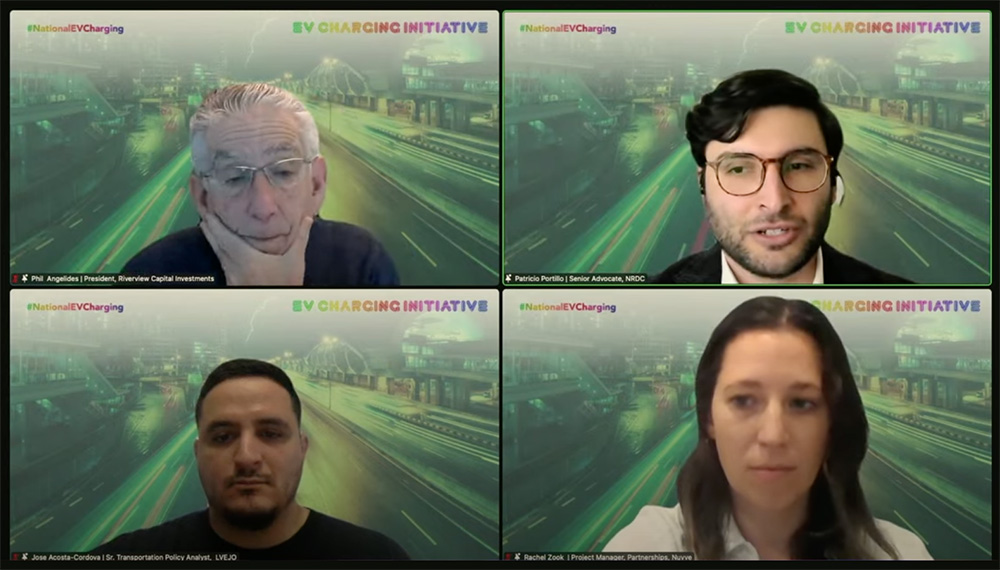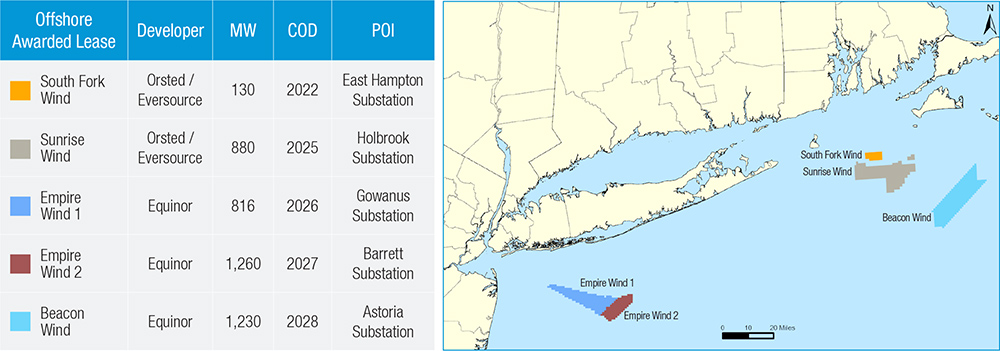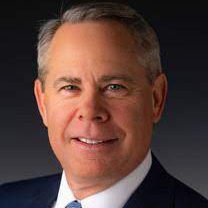It will cost the U.S. up to $100 billion to build and power the charging network necessary for a massive conversion of the nation’s transportation system to electric vehicles, an analyst said this week during a webinar produced by the EV Charging Initiative, a national collaborative.
The webinar was the third in a series of regionally focused sessions on the challenges of electrifying the nation’s transportation sector. (See Summit Explores Challenges to Deploying EV Infrastructure.)
“We really have to think in terms of how we build this new network. It’s not just a matter of modifying the existing network” of gas and diesel stations, said Phil Angelides, a partner with EVC Partners, a company created to identify viable building sites for EV charging stations in California.

The company surveyed existing truck stops throughout California and found that limits on both the distribution and transmission system would make it difficult for many existing truck stops to convert to full EV charging, Angelides, a former California state treasurer, said during a virtual summit of the collaborative focused on Midwestern states.
Electrifying the nation’s transportation sector is a major goal of the Biden administration, which wants 500,000 public charging stations built nationwide by 2030. That’s about half the number that will be needed by then, according to experts outside of the administration, especially if half of all new automobiles sold in 2030 are electric, as administration officials hope, and if trucking companies embrace battery electric drive systems over diesel.
As a point of comparison, there are about 140,000 conventional fueling sites operating in the U.S., said Tom Kloza, global head of energy analysis at Oil Price Information Service. That total does not include the number of fuel pumps at each station, he said.
The Infrastructure Investment and Jobs Act (IIJA), passed in November 2021, created the National Electric Vehicle Infrastructure (NEVI) formula program, administered by the Federal Highway Administration. (See US Completes Review of State EV Charging Plans.)
The legislation provided $5 billion in NEVI formula grants distributed to all 50 states to “strategically deploy” EV charging stations along 75,000 miles of federally designated highway. The law also authorized $2.5 billion for a competitive grant program. Both grants require 20% local matching.
Charger Challenges
In three separate discussions, the conference also looked at what it will take to electrify diesel-powered trucks and buses as quickly as possible and the difficulty involved in planning, building and getting power to public charging stations.
“There has been a significant commitment by the federal government, and a number of states have put resources forward to support the charging infrastructure,” Angelides said. “The money is substantial, but I don’t think it’s sufficient for the issue in front us.
“Given the uncertainty of the timing of when these EVs are going to show up, both in the light-duty passenger space and the medium and heavy-duty truck space, it’s very hard to finance major infrastructure investments against that kind of uncertain revenue.”
Angelides also argued for an immediate review of how utilities, working with state PUCs, plan system upgrades, which typically take three to five years of planning and negotiation.
In a separate panel, Drew Bennett, executive vice president at Volta Charging (NYSE: VLTA), said the availability of power at any potential charging site can determine whether charging stations are built. The availability of labor in a region is also a factor, as is the availability of transformers.
“Transformers are really backordered,” he said, “and taking over a year [to obtain] for some utilities. This is something that I think is not going away. I think if you want DC fast charging or even large Level 2 charging, we’re going to need a lot more transformers put into parking lots in the future, and that’s something that needs to adjust.”
In a third panel, Chris Bast, a climate and decarbonization policy expert and principal at Hua Nani Partners in Virginia, noted that $7.5 billion authorized by the IIJA should be seen as “a down payment” on the administration’s 500,000 charging station goal.
Lynda Tran, director of public engagement at the U.S Department of Transportation, said the federal money is an effort to stimulate broader direct investment from private companies.
“We are creating a market; we’re creating a demand that is now translating into lots of private sector investment,” Tran said, referencing a recent analysis commissioned by the Natural Resources Defense Council that found the EV industry has spent $210 billion since Biden took office.
Light, Heat … and Transportation
The analysis also concludes that the total potential funding, including grants, loans and tax credits, authorized by the IIJA and the Inflation Reduction Act in the coming years amounts to $245 billion. Bast pointed out another even more significant and obvious — but hardly discussed — consequence of the effort to electrify transportation is the merger of the transportation industry and the electric generation and distribution industries.
“It’s becoming clear that one of the big challenges we’ll be addressing over the next decade is the merger of two huge sectors of the economy, transportation and electric,” Bast said.
“And [by electric], I mean electric utilities and their regulators are going to have a big and important role to play as we try and bring these two sectors together.”
Katherine Peretick, a member of the Michigan Public Service Commission, said the issue is difficult because “it requires a totally new way of thinking about the electric sector and electric utilities.”

Utilities have for decades supplied power for light, heating and cooling, she said, adding that many utilities across the country include the word “light” in the company name.
“Now we are adding transportation to that list. That means that the jobs of utilities and the jobs of regulators are front and center and are more important than ever as a part of this transition. It will require some unprecedented coordination among all of these parties,” Peretick said.
Referencing a recent report from the Electric Vehicle Council of the Fuels Institute, she said most cities and counties surveyed “had little to no public policies for public EV charging.”
“These policies are currently being established, and we need to make sure we are being thoughtful about their implications and purposefully coordinating with a very wide range of stakeholders that are involved in transfers, transportation and electrification planning,” she said.
“We need to intentionally include a wide variety of parties in this conversation, including parties who have not traditionally been included.
“As the usage of the electric grid changes, the way that we pay to maintain and upgrade that grid is also going to need to evolve,” Peretick said.
To illustrate that point, Peretick mentioned a program the state is coordinating with Consumers Energy (NYSE: CMS-PB), a Michigan utility, transmission company ITC Holdings and EV maker Rivian Automotive (NASDAQ: RIVIN) to install EV charging stations in Michigan state parks.
Rivian is installing the chargers; ITC is paying for the power; and Consumers Energy is paying for the upgrades to power lines inside the parks.
The demonstration project is part of a longer-term plan created by Michigan, Illinois and Wisconsin to build and maintain charging stations around the perimeter of Lake Michigan, she said.
Christopher Budzynski, director of utility policy at Exelon (NASDAQ: EXC) — which serves four major metropolitan areas, primarily in the Mid-Atlantic region as well as northern Illinois — said the company is expecting 4 million EVs in its service area between 2025 and 2040, including 1 million in Illinois alone.
 Clockwise from top left: Chris Budzynski, Exelon; Nancy Ryan, eMobility Advisors; Drew Bennett, Volta Charging; and Cory Bullis, Flo EV Charging | The National EV Charging Initiative
Clockwise from top left: Chris Budzynski, Exelon; Nancy Ryan, eMobility Advisors; Drew Bennett, Volta Charging; and Cory Bullis, Flo EV Charging | The National EV Charging Initiative
“I think we need aggressive policies that promote transportation electrification. That’s the starting point. And then I think specifically as it relates to what we can do as a utility is really promoting policies that support programs that allow us to get ahead of this. I think that’s where we’re starting to find some challenges across the industry where things are just happening so quickly,” he said.
“Your traditional utility model says build it and they will come. I think they’re already here. So, we need to start building out a little bit more to get ahead of them coming in. I think as we look at the light-duty vehicles coming on to the system, it’s happening, and it’s happening in a significant way. I think it’s happening quickly,” he continued.
Budzynski thinks Exelon is going to play a “critical role” in building that infrastructure and “supporting our customers and communities.” He said the company has a number of different programs across its utility subsidiaries that will allow for construction of over 7,000 charging ports, serving light-duty vehicles, commercial medium- and heavy-duty fleets and multi-unit dwellings.”
“We’ve got to also think about resilience and reliability and ensuring that we have that along with … wires that support these charging stations. It is a very comprehensive support role that the utility needs to play,” he said.
Cory Bullis, public affairs director for FLO EV Charging, a Canada-based company that manufactures chargers in Michigan, underscored Budzynski’s point about Exelon’s role.
Bullis said it is vital to create “well-defined roles for utilities to not only invest in infrastructure to support transportation electrification, but to do it on longer time horizons and to do it at a much larger scale. If we want a resilient grid, then let’s make sure we’re deploying assets or chargers that really fit the use case for the expected dwell time. Let’s have smart chargers so we can better manage the load.”
Keynote speakers for the webinar were Illinois Gov. J.B. Pritzker, supporting the crucial role of state governments in the initiative, and Gabe Klein, executive director of the U.S. Joint Office of Energy and Transportation.
The NRDC assisted in planning the event and provided speakers.

